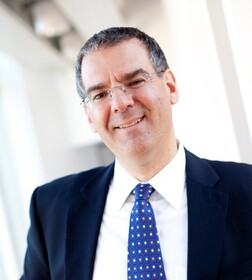 Ron Adner, Author of "The Wide Lens" and an award-winning professor of strategy at the Tuck School (Dartmouth) Ron Adner, Author of "The Wide Lens" and an award-winning professor of strategy at the Tuck School (Dartmouth) When you are innovating, you can do everything right and still fail. How is that possible? According to Ron Adner, he writes in his excellent book The Wide Lens that "your success depends not just on your ability to execute your own promises but also on whether a host of partners—some visible, some hidden—deliver on their promises too." Companies that innovate are adept at execution focus, such as gaining customer insights, building core competencies, and beating the competition. The pitfalls they run into are co-innovation risk and adoption risk. Co-innovation risk occurs when a company's innovation is dependent on the commercialization and affordability of other innovations. Adoption risk occurs when a company's innovation is dependent on partners' adoption of it so that end consumers can decide whether it satisfies their needs and their willingness to pay for it. After reading The Wide Lens, I had few questions for Ron Adner. I narrowed it to five questions whose answers are below: Five Questions Question 1: You point out how hard it is for companies to have innovation success. Do companies need to experiment with many innovations using the minimum viable ecosystem (MVE) approach to have a handful of successes? When companies innovate in ecosystems, their success depends on their ability to line up partners. The MVE is an approach to finding and organizing the starting coalition on the larger journey. Unlike an MVP approach, which is focused on discovery, and the MVE approach is focused on aligning – you need to have a good sense of where you are heading before approaching partners. If you don't, it will be hard to get them to commit at scale, and the risk is getting trapped in pilots. Question 2: Do you think China has changed the game when it comes to innovation? Is their approach different from the wide lens approach with the government playing an important role? Does their approach mitigate or even eliminate the co-innovation and adoption chain risks? Successful innovation in China, like everywhere else, depends critically on managing adoption chain risk and co-innovation risk. One difference in China is that the government can play a more active role in resolving these issues on both the regulatory and the incentive side. The Chinese approach is reminiscent of the role that Japan's Ministry of Industry and Trade (MITI) played in its rise through the 1970s and 80s. A second difference is one of context – China's rapid rise in prosperity interacts with what had been a challenged infrastructure to enable a fast path adoption. For example, where mobile payments in the West have to outcompete credit cards, in China the competition is cash in the absence of wide-spread credit cards. And when you combine that with the government wanting more traceable transactions, you can see why mobile payments would take off as quickly and penetrate as deeply as they have. These two differences in the Chinese approach are not a substitute for innovation, they allows innovations to scale and succeed faster. Question 3: Is innovation so complex today that only large companies like Apple, Amazon, Google, etc. can adopt the wide lens when it comes to innovation? If anything, innovation's complexity means that it is even MORE important for smaller firms to master the Wide Lens principles. The giants have the time and resources to take multiple shots on goal. We see them failing in many of their ecosystem ambitions (payments, health, mobility, all around, with shout-outs to Google showing how not to launch a game platform with Stadia, and Apple losing in the education market that gave them their start). There is plenty of room for innovation, and even ways to outcompete the giants, as long as you know how to change the game (this is the subject of my new book, Winning the Right Game, which will come out next year). Question 4: Do you think innovation success will ever be achieved by one company the way AT&T Bell Labs did by creating universal connectivity? Do you feel that companies will have to continue to overcome all three risks: Execution, Co-innovation, and Adoption Chain? Even the rise of the Bell network was the product of decades of ecosystem construction. Bell Labs was founded in 1876, so looking at Bell Labs in the 1970s is looking at the cutting-edge R&D lab of a long-established monopolist. Keep in mind too that Bell/AT&T did not capture the benefit of the vast majority of its inventions. Other innovators figured out not just execution at scale but also how to align the adoption chain and co-innovators that brought the inventions into mainstream reality… Everyone has to, or had to, deal with the Wide Lens issues. Question 5: As of this writing, Tesla's market capitalization is higher than GM and Ford combined. Can you briefly explain what made Tesla succeed in electric vehicle (EV) when Better Place could not? Market cap is variable, but the accomplishment is absolute. Telsa has succeeded in changing the game in EVs and – more impressively – in the automobile industry writ large. Better Place imploded because of an own-goal on execution and a clash of egos. There is a nice epilogue on their story posted at ronadner.com. Tesla's biggest disruption in my view is less EV per se (though that is huge) than the integration of software into so many parts of the car and the car network, which allows them to do unique things with upgrades, recalls, charging networks, acquiring autonomous driving data, etc. – an incredible achievement. In addition to Musk's innovative and strategic brilliance, he deserves credit for his ability to manage the finance side, bringing money forth from almost thin air. Bezos did this in the early days of Amazon, and that gave him the freedom to operate that he has used since. With Better Place, which had a strategy and model that I still think is superlative, the oxygen of capital simply ran out, and founder/CEO Agassi could not bring in the next critical tranche. It is a very disappointing end to what was a promising innovation. Bonus Question: Do you think Wall Street is more patient with charismatic CEOs like Jobs, Bezos, and Musk when they start making money with their innovation? Is charismatic leadership today a necessity for innovation success? Neither sufficient nor necessary, but it never hurts. : ) I want to thank Ron Adner for taking time out of his busy schedule to answer few questions I had about his book The Wide Lens. To learn more about Ron Adner: Book: The Wide Lens Web site at Dartmouth: Professor at Dartmouth Speeches: An Interview with Ron Adner re: The Wide Lens ##### 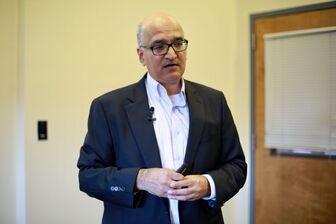 I am an author, speaker, executive coach. I guide people thrive on high stakes stage whether it's for a job interview, career advancement, a sales presentation or a high-stakes speech. I am the author of a practical book on speaking titled Winning Speech Moments: How to Achieve Your Objective with Anyone, Anytime, Anywhere. The main idea of the book is that if you want people to remember your speech and take action, you must create a winning speech moment. Please download the free speech checklist I created that I always use to create a winning speech for any occasion. Please contact me if you would like to discuss how you can work with me. If you are interested in inviting me to give a Zoom talk (during the pandemic) on job Interviewing. career development or high-stakes speaking, you can reach me at [email protected] or 732-847-9877. Note, if you are an author, content producer or interesting and would like me to interview with five questions and then publish it as a blog post and promote it on LinkedIn, Twitter and Facebook, please contact me.
0 Comments
 David Kidder - founder, investor, speaker, and author. David Kidder - founder, investor, speaker, and author. I recently read an excellent book by David Kidder and Christina Wallace, New to Big. It is one of the best books I have read on entrepreneurship, especially how you can bring an entrepreneur mindset into large companies to enable growth. It is a playbook for large companies to not only survive but thrive by becoming "ambidextrous." They have to become a New to Big machine to build new businesses to sustain growth. Once it becomes big, the core can take that nascent business from Big to Bigger, which is their forte. A company's success in becoming good at both New to Big and Big to Bigger rests on a CEO being ambidextrous. CEOs are experienced at Big to Bigger but not New to Big. Using a football metaphor, it is akin to having Tom Brady being great at QB on offense and also being an excellent safety on defense. But that is what is needed for large companies to remain relevant. Every company wants a high valuation from Wall Street, but they don't know how to do it. Kidder explains at a high-level how a company can do this and turn it into its core competency. You don't have a choice. Either you are going to change or become roadkill. What should you do if you want your company to grow by becoming a New to Big machine?
Start now since your competitors are already doing it. Good Luck! Question 1: It is hard for companies to become and remain a powerful Big to Bigger machine. Should large companies attempt to become a New to Big machine, or should they instead focus on their core competencies and acquire successful companies at New to Big?
Question 2: What is the main reason that prevents a large company from becoming a New to Big machine?
Question 3: You write in your book that the "success of New to Big sits squarely with the CEO." So don't you need a CEO with experience in New to Big to make it work?
Question 4: Briefly, what should startups need to do to become a Big to Bigger machine? Should they attempt to become Big to Bigger by going IPO or sell to a large company or a private equity firm?
Question 5: Isn't New to Big hard to succeed in large companies partly because you are trying to create this machine in an artificial environment? By this, I mean entrepreneurs make many sacrifices to create a market, including taking low compensation. How do you create that hunger and urgency in a New to Big initiative in large companies where they have an escape path to Big to Bigger?
Bonus Question: You mention about Day One mindset that Jeff Bezos uses to keep Amazon a well oiled New to Big machine. But isn't he rare in that he has mastered being ambidextrous? Isn't that his secret sauce in making Amazon one of the most valuable companies on Wall Street?
Attributes + Skills of Day One Mindset: Obsession over customer problems + needs (not tech) Capturing impact of outside forces (right, on-time) Rediscovery + leveraging of proprietary gifts Outside-in vs. Inside-out: bold growth portfolios driving truth Speed + cost: lean experimentation, productive failure Five books recommended by David Kidder to get a deeper understanding of being an entrepreneur:
I want to thank David Kidder (founder, investor, speaker, and author) and Rachel Jerome (Marketing Manager) for their help with this blog post. David Kidder's Books: New to Big: How Companies Can Create Like Entrepreneurs, Invest Like VCs, and Install a Permanent Operating System for Growth The Startup Playbook: Secrets of the Fastest-Growing Startups from Their Founding Entrepreneurs David Kidder's Linkedin Contact: https://www.linkedin.com/in/davidskidder/ David Kidder's Website: https://www.davidskidder.com/ Bionic Website: https://onbionic.com/ The Science of Success Podcast Would You Bet Your Life On It? How to be Certain with David Kidder #####  I am author, speaker, executive coach. I guide people thrive on high stakes stage whether it's for a job interview, career advancement, a sales presentation or a high-stakes speech. I am the author of a practical book on speaking titled Winning Speech Moments: How to Achieve Your Objective with Anyone, Anytime, Anywhere. The main idea of the book is that if you want people to remember your speech and take action, you must create a winning speech moment. Please download the free speech checklist I created that I always use to create a winning speech for any occasion. Please contact me if you would like to discuss how you can work with me. If you are interested in inviting me to give a Zoom talk (during the pandemic) on job Interviewing. career development or high-stakes speaking, you can reach me at [email protected] or 732-847-9877. Note, if you are an author, content producer or interesting and would like me to interview with five questions and then publish it as a blog post and promote it on LinkedIn, Twitter and Facebook, please contact me. We are often told that questions are more important than answers. This is because you can quickly get answers from so many places such as Siri, Google, Internet, Quora, LinkedIn, and other expert sources. Today, you can get answers to just about anything fast. If you want to succeed individually or organizationally, you have to become good at asking questions. Asking questions is good, but what is better is to ask bold, provocative questions that make people think. They are often not asked for fear of how others will react to them. But they must be asked if you want to come up with breakthrough ideas. If you want to think like an entrepreneur, solving customer needs that they may not even know they have, starts with a question. That's what entrepreneurs or those with an entrepreneurial mindset do. In his book New to Big by David Kidder, he writes that the idea of his company Bionic started when he asked a provocative question to GE's CEO, Jeff Immelt, at their annual conference in Boca Raton, FL. Here is the question David asked when he was part of a panel, and Jeff Immelt was sitting in the front row: "Jeff, how many fifty-million-dollar startups did GE launch last year? ... I bet the answer is zero ... And if that's true, I would be terrified if I were you. With ninety billion dollars in the bank and three hundred thousand employees, how does this not happen all the time?" Instead of David Kidder becoming a persona non grata at future GE events, he was surprised when Jeff Immelt said at the end of their annual conference: "That was the most important question in the history of this leadership conference." Suddenly, David realized that his idea of creating an entrepreneurial mindset within large companies had to be pursued as a business. Many large companies had to become good at New to Big (taking an idea from concept to growth business) rather than being just good at Big to Bigger (taking a growth business and scaling it). He and some of his team members he worked with at the startup Clickable that David had co-founded decided to start Bionic. Bionic's mission was to help bring entrepreneurial mindset within larger companies using Growth OS (methodology they created from their startup experience, so the large companies are not only Big to Bigger machine, which they do well, but New to Big machine too. Becoming a New to Big is not something companies can and should outsource. They have to learn to develop that core competency if they want to thrive in the digital world in which we live. Bionic went on to work with many companies, including Microsoft, P&G, Citigroup, Nike, Exelon, etc. The idea of starting Bionic would not have happened if David did not have the guts to ask that bold question in a high-stakes environment at GE's leadership conference. Sometimes the risky thing to do is to ask a question that many people are thinking about but not asking. If you want to have an entrepreneurial mindset, ask a provocative question as David Kidder did, and you can change the world for good. ##### 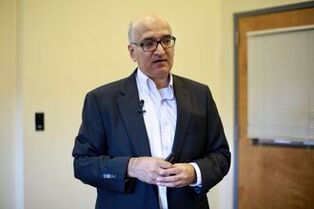 Jay Oza is an author, speaker, executive coach. He makes people thrive on high stakes stage whether it's for a job interview, a sales presentation or a high-stakes speech. He is the author of a practical book Winning Speech Moments: How to Achieve Your Objective with Anyone, Anytime, Anywhere. You can get this book on Amazon for $9.99 for a limited time. Please download the free speech checklist that you can use to help you create a winning speech for any situation. Please contact him if you would like to discuss how you can work with him even if you are budget constrained due to the pandemic. If you are interested in inviting him to give a Zoom talk on job Interviewing or high-stakes speaking, you can reach him at [email protected]. 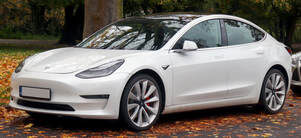 Tesla Model 3 (taken from Wikipedia) Tesla Model 3 (taken from Wikipedia) Do we build products, services, or courses, and then find out after launching it that there are not enough paying customers to make it profitable? This is an "Oh sh*t" moment that many go through. Some will grudgingly accept failure and learn from it. Others will continue to plod along, hoping for a success. But the market is brutal. It is telling you that they don't like what you have to offer. By the time you figure it out, it will prove to be a very costly lesson in time, energy, money, and confidence. Alberto Savoia, author of "Right It," knows this well from his experience. He writes, "Most new products, services, businesses, and initiatives will fail soon after they are launched—regardless of how promising they sound, how much their developers commit to them, or how well they execute them." (You will also find my interview with Alberto Savoia in the blog post "Five Questions for Alberto Savoia: A Man on a Mission to Prevent Failures Among Entrepreneurs.") So how do you eliminate failures right from the get-go? You have to pretotype that Savoia popularized and writes about in his practical book. The idea of pretotyping applies to all of us, not just entrepreneurs. Why fail when you don't have to? All you have to do is pretotype, gather data, make a go-no-go decision. It's not that complicated. What is Pretotyping? Pretotyping is pretending you have a prototype of a product, service, or a workshop (in my example below) so you can find out whether customers are willing to pay. If customers are not willing to pay, you will fail. If you still decide to go forward, you will be taking a huge risk. Great customers are those who pay before you even have a product. You can think of pretotyping as similar to what they use in manufacturing called build to order. In the beginning, you are building a customized product, so you have to build based on customers' willingness to pay. And that is what you have to do when you are trying to get valuable information from customers. Tesla's Example of Pretotyping Before Tesla built their Model 3 car, they pretotyped the concept to gauge customers' interest in the car. They wanted customers to make a commitment by preordering it online by putting down $1,000 deposit. Over 115,000 put down $1,000 before even seeing the what the car would look like. That showed Tesla that they can now build the car since there is not just passing interest but people were expressing it with cold hard cash. It was time to build the car and they did. Not only did I not preorder the car, I did not see this as a sign to purchase Tesla stock. My Simple Example of Pretotyping Idea Have a one day workshop to teach people how to interview for a job. Generating Interest I gave a talk and asked people at the end how many would be interested in attending a paid workshop. Out of fifteen people who attended, I think close to ten raised their hands. So I thought I had customers. But raising a hand at a free talk costs one nothing. Test the Workshop Idea I sent an email with one-pager advertising the workshop and the agenda. I priced it at $299, which I thought was very reasonable and would accommodate up to ten people. I knew that I needed at the minimum five paid customers to make it work. Response from Customers I got only one response from someone who was ready to attend the workshop and was willing to send me the payment. Well one is better than none, but not sufficient to conduct a workshop, so I had to move to the back up plan if doing the workshop made no business sense. Back Up Plan I contacted the client and told him that the workshop idea will not prove very useful to him since clients have different backgrounds. Instead, I have decided to conduct two 75 minutes of one-on-one coaching sessions for the same price. In fact, this client was getting an excellent deal. He would now get two one-on-one coaching sessions for $299, which would have cost him $499. The client gladly took the two sessions and liked it so much that he has become one of my best clients. For now, I have dropped the plan to do a workshop for now. I may pretotype it again in the future before committing to it. Lesson Learned You have to pretotype to see if customers are willing to pay for your product, service, course, etc. If you don't get the numbers you need, you have to have a backup plan to take care of those who were ready to pay or already paid for it. You may lose a little, but it is better to lose a little by learning a valuable lesson than to lose a lot by not knowing whether you will get any customers. You have to fail very fast. So pretotyping is something we should all do before we build anything. It can be as simple as my conducting a workshop or building a product or service. You need some data to justify building a prototype. Without customer data, you will be flying blind and crash. Pretotyping is a simple way to mitigate failures. ##### 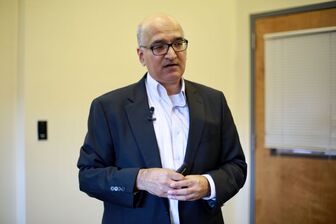 Jay Oza is an author, speaker, executive coach. He makes people thrive on high stakes stage whether it's for a job interview, a sales presentation or a high-stakes speech. He is the author of a practical book Winning Speech Moments: How to Achieve Your Objective with Anyone, Anytime, Anywhere. You can get this book on Amazon for $9.99 for a limited time. Please download the free speech checklist that you can use to help you create a winning speech for any situation. Please contact him if you would like to discuss how you can work with him even if you are budget constrained due to the pandemic. If you are interested in inviting him to give a Zoom talk on job Interviewing or high-stakes speaking, you can reach him at [email protected]. 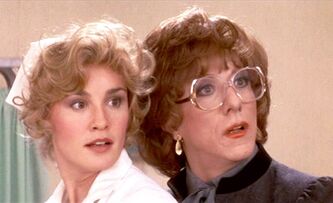 One of my favorite scenes from the movies comes from "Tootsie," which came out in 1982. The movie is about an out of work actor Michael Dorsey, played by Dustin Hoffman. Getting a job as an actor is difficult for him since he is very picky in his roles. He decides to take a risk by impersonating a woman, "Dorothy Michaels," to audition for a part as a hospital administrator in a soap opera "Southwest General." He gets the part, and his role as Emily Kimberly becomes very popular. While working there, Dorothy befriends the lead actress on the soap opera, Julie Nichols, played by Jessica Lange. Michael is attracted to Julie. When Julie invites Dorothy to her place, Julie, after having a few glasses of wine, tells Dorothy how frustrating it is when it comes to relationships. She confesses she would respect a man if he stopped all the BS and just came out and said: "Listen... I could lay a big line on you, we could do a lot of role-playing, but the simple truth is, I find you very interesting and I'd really like to make love with you." Upon hearing that, Dorothy, naturally, starts feeling hot. Later in the movie, Michael sees Julie at a party standing alone with a drink in her hand. He approaches her and lays the same pick-up line that Julie shared with Dorothy. Julie promptly empties her glass on Michael. Michael learned that what one says in private is BS, especially when one is little tipsy. Now I don't like to get a drink thrown at my face or worse, get punched, but that pick-up line can be repurposed to network with someone. Let's face it, we meet many people that we would like to network with that rarely gets off the ground. Why? It is a lot of work on both sides to network effectively. Networking just doesn't happen; you and the other person must make it happen for it to work. So here is the repurposed line from "Tootsie" on networking that I have come up with. You can tweak it and make it better and post it in the comment section of this post. Why can't we just stop all the BS and be direct and say: "Look, I would like to network with you. We can help each other out. Let's set up a call ASAP and get to work." Is it bold? Not really. Will it work? Yes, if someone sees a benefit in networking with me. Will this save me a lot of time? Absolutely. I don't want to network with people who don't know how to network. As you know well that the half-life of any networking is when you end the conversation. Most of my networking contacts are just that. I am mostly at fault since I have not paid much attention to networking and developed any strategy and action plan. Instead, I spend a lot of time mastering other things and not focusing on networking. If we want to succeed in anything, we have to focus on networking with a strategy and a plan. It starts with being direct and letting someone know that you take networking seriously. You and the other person have to get to work right away to make it work. ##### 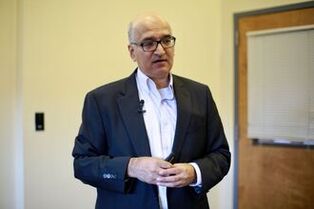 Jay Oza is an author, speaker, executive coach. He makes people thrive on high stakes stage whether it's for a job interview, a sales presentation or a high-stakes speech. He is the author of a practical book Winning Speech Moments: How to Achieve Your Objective with Anyone, Anytime, Anywhere. You can get this book on Amazon for $9.99 for a limited time. Please download the free speech checklist that you can use to help you create a winning speech for any situation. Please contact him if you would like to discuss how you can work with him even if you are budget constrained due to the pandemic. If you are interested in inviting him to give a Zoom talk on job Interviewing or high-stakes speaking, you can reach him at [email protected]. I watched the first 2020 presidential debate, and Trump did not do what he had to do as an incumbent president. He acted like he is still a long shot challenger and that was a big miss om his part. But he does have a chance to turn it around in the next two debates. Will he? Before I go into what he needs to do, here are the reasons why Trump did not do well: 1) Trump did not sound, look and act presidential This was the easy part, and he couldn't accomplish that. Ronald Reagan, George W. Bush, and Barack Obama all lost their first debate when they ran for re-election, but they all looked presidential. That allowed them to turn it around on second and third debates. Trump may have been angry that he had to be there, but he had to show respect for the position that George Washington and Abraham Lincoln held. He acted like a WWE wrestler at a presidential debate. 2) Trump did not do much counter-attacking Trump went on the attack right from the beginning. That is not what he had to do. He had to take punches and look for his spots in the debate and counter attack and walk away with a draw. That would have been a big win for him. Now he has to attack that will not make him look presidential and the format for the next debate is not conducive for attack style he displayed in the first debate. 3) Trump had to defend his record That may be the main reason why he stuck with his attack strategy. Unless he was willing to apologize for 7 million infections and over 200,000 deaths. Instead, he was blaming Joe Biden for what happened under his watch. He had to address his record head on rather than being defensive. 4) Trump did not give his vision for second term This is what he had to do, at the least, in the debate. He has no clue why he wants to remain president. What is he going to do that he has not done during his first term? 5) Trump could not change You are how you debate. Trump showed he does not follow the rules and thinks he can do anything he wants. Joe Biden didn't even have to say that. Trump did the selling for Biden. At the end, Biden outsold the greatest salesman the world has ever known without even being that good in the debate. Just think of that. Trump showed that he has no self-awareness and could not change. He was given ample of opportunity by the moderator and he wanted to blow up the debate and succeeded. Trump will struggle in the next two debate formats. He will have a hard time connecting with ordinary Americans in the next debate, a town hall format. Trump has a hard time being empathetic, which will be needed since he will have to look at the people who are asking questions. The third debate is about foreign policy. That is Joe Biden's expertise. Biden can go very deep. The bad news for Trump is that it is going to be the least-watched debate. Winning Strategy for Trump to Adopt in the Next Two Debates The biggest problem Trump has in 2020 election is that he won the 2016 election. He did everything to lose that election and carved out an electoral college win and lost the popular vote by close to 3 million votes. As we know that success is a bad teacher. He is doing everything again to lose the election, hoping that his base shows up and the Democrats will stay home. If that does not work, then create doubt and let the courts decide like they did in 2000. But a better strategy is to do well in the next two debates since he has such a low bar that if he just not make faces, maintains his composure and be polite to Joe Biden and the moderator, he will win. No one will care what he says. He must answer questions below rather than blame, obfuscate, or deflect. If he is going to take credit for things, then he must also accept the blame. He was the only president we had for the last four years. He must look like he is willing to live by the slogan that "Buck Stops Here." If he does not do that, the election will come down to---to put it bluntly---racist America vs. non-racist America. 1) What is his vision for the next four years regarding good jobs, health care, China, climate change, and deficit/debt? 2) Why the US has 4% of the world population but 20% of deaths? What went wrong? Why should we trust him that he can fix this? 3) Why is the country so divided over race and justice and how he plans to bring the country together 4) Why can't he release his tax returns to see if he has not committed fraud and who he owes money to? 5) How has his signature achievement, tax cuts, and trade deals, have helped ordinary Americans 6) Why should people believe that he cares about the Constitution, Democracy, Justice, Facts, and Decency? 7) Why is he the only modern president who has ever gotten asked by the media to denounce white supremacist groups? ##### 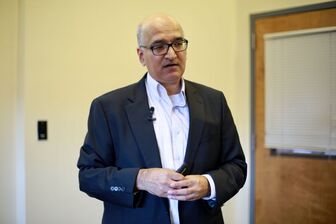 Jay Oza is an author, speaker, executive coach. He makes people thrive on high stakes stage whether it's for a job interview, a sales presentation or a high-stakes speech. He is the author of a practical book Winning Speech Moments: How to Achieve Your Objective with Anyone, Anytime, Anywhere. You can get this book on Amazon for 99 cents for a limited time. Please download the free speech checklist that you can use to help you create a winning speech for any situation. Please contact him if you would like to discuss how we can work together even if you are budget constrained due to the current economic situation. If you are interested in inviting him to give a Zoom talk on job Interviewing or high-stakes speaking. You can reach him at [email protected]. |
AuthorJay Oza Archives
July 2024
Categories
All
|
© 2017 Winning Speech Moments

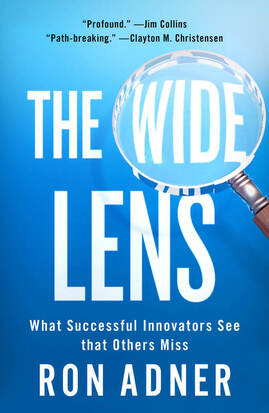
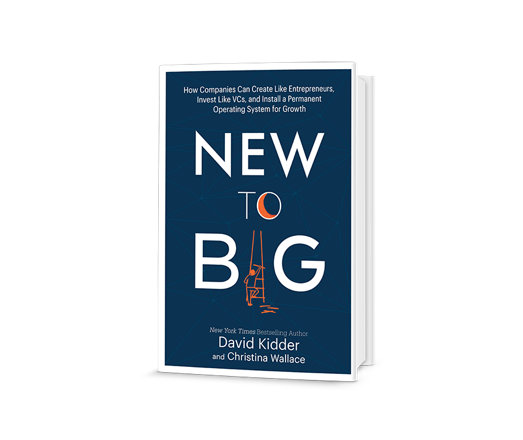
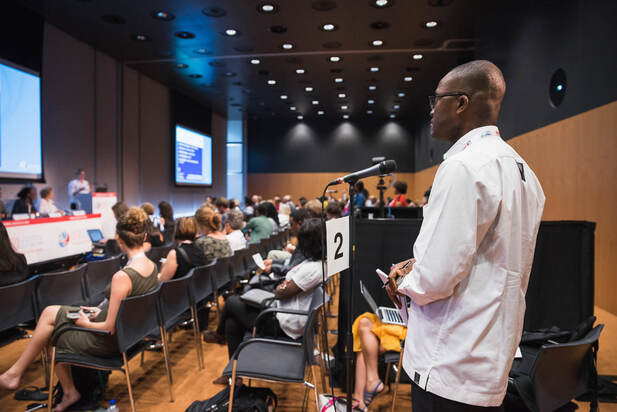
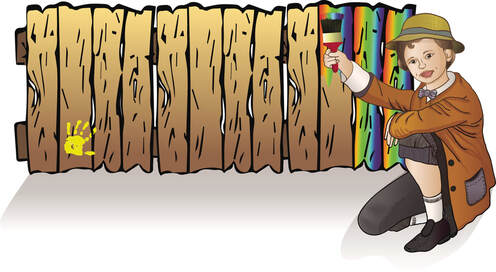
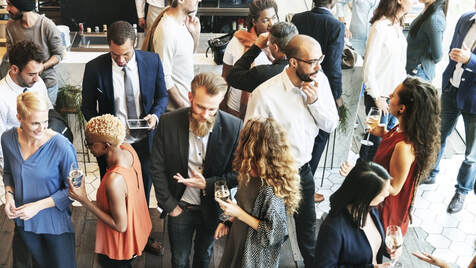

 RSS Feed
RSS Feed